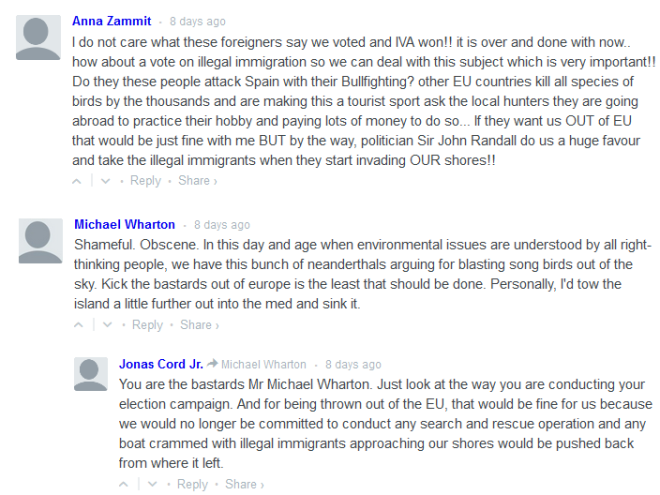They say that bad situations bring out the worst in people. Truth be told, I agree with this statement, but I would never have imagined it to be also relevant to an entire nation. The past two weeks have exposed some truly unsettling aspects of the Maltese demeanour.
I have personally had a hard time this April. First and foremost, we lost the spring hunting referendum, a very personal blow which left a bitter taste in my mouth. This week was also extremely frustrating, with the horrific news circling the tragedies happening in the Mediterranean, leaving me with a helpless feeling at the face of absolute tragedy.
However, the cherry on this not-so-edible cake has to be the intolerance some Maltese people have been churning out on various online platforms.
The tale starts with the aftermath of the spring hunting referendum results. While this issue and illegal immigration are totally unrelated, it did not stop the Yes voters from throwing these poor souls in the crossfire. I had written about that colourful instance in which Yes voters berated foreigners who threatened to boycott Malta, by comparing spring hunting to abortion. At the time, these people felt that the international media should not focus on the issue of spring hunting, but instead focus on more interesting issues such as immigration.
I have reproduced some of these comments below, showing the way these people dehumanise immigrants.

Comments reproduced under a Newsbook article.
It is unfathomable that there are still people out there that can be so hateful in the face of such tragedy. These self-stylised ‘patriots’ (such as that twat who is afraid of eating fish as they might be contaminated with drowned immigrant ebola) just keep on coming of the woodwork, with their racist rants about how we should leave these ‘cockroaches’ to drown, and how much it is going to costs us to clean up OUR seas from their bodies.
We pride ourselves as being one of the most generous nations in the world. We donate money to L-Istrina and to Puttinu Cares, and we brag about it on social media to bully others into being more philanthropic. But how many of us out there are truly generous and selfless? How many of us would actually go to a detention centre in Malta and give a hand to those in need? As opposed to pretending to sympathise with the plight of these immigrants, why not do something tangible about it?
While good gestures are always welcome, it is useless donating bouquets of flowers to the decaying corpses of these immigrants, and for the President to visit the morgue and observe a minute of silence. It is useless pretending to care when deep down the vast majority of Maltese people harbour a deep seeded sense of hatred to these so-called ‘invaders’.
Immigrants have been drowning at our shores for decades, but the sheer magnitude of tragedies reached a pinnacle in this recent week. While the Prime Minister may call this a genocide in the international media, Maltese people have been committing character assassinations of asylum seekers in Malta for years.
If anything, these past two weeks have exposed this class of selfish and racist people in Malta. They may walk behind the Qalb ta’ Gesu, celebrate their village feast with four gallons of beer in their system, and donate money to cancer ridden children, but they are completely rotten to the core.
These are mostly the same people that voted yes to keep their addiction, by standing next to those genuine law-abiding hunters and calling it a tradition. These are probably also the same people that would leave a black child to drown while they joyfully suck at their beer bottle and polish their shotgun.







